You shot your deer, but it took off. Now what? Follow these 10 tracking tips to recover your deer and make your hunt a success.
Every deer hunter dreams of the perfect shot-but whether the hit is solid or less than perfect, the work continues after you pull the trigger. Tracking is a skill every hunter must master because recovering your deer is just as important as making the shot.
By Bryce M. Towsley
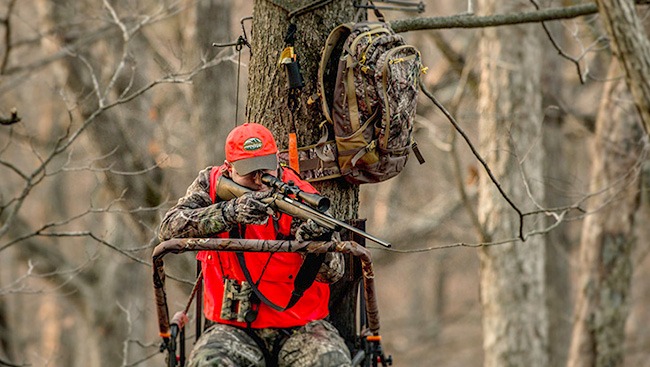
Very rarely do deer "drop in their tracks" at the shot. Once you make your shot, stay focused on the deer noting where it was when you fired and the direction it took off in.
Despite what we may see on television, deer usually do not drop in their tracks at the shot. Sometimes, too, "stuff" happens and the shot is less than perfect. That's when you have to unleash your tracking skills and go find them. Here are 10 tried-and-true tracking tips that have served me well over the years in finding deer after the shot.
What Should You Do First After the Shot?
Tip 1. Stay Focused
After the shot, stay as calm as you can and stay focused on the deer. Watch it as long as you can then listen even longer. Often you will hear the deer long after you can't see it anymore.
Before you leave your stand, pick a clear landmark where you last saw the deer and another where you last heard the deer. Also, pick a landmark noting where the deer was when you shot. Have these landmarks firmly in your mind before you exit your stand. If you have a compass, take a bearing to each of these locations. Snap a few photos with your cell phone or use a small notepad to note the locations or draw yourself a little schematic that shows these three key landmarks.

Before you leave your stand, use your phone to take a photo of where the deer was standing when you shot and the landmark where you last saw the deer before it disappeared.
Go to where you last saw the deer and look for blood and tracks. Remember to look on the bushes as well as on the ground for blood. If you fail to find any, go to spot where you shot the deer and search for blood and/or hair. If you still don't find a blood trail of any kind, go back to your stand and double check to make sure you were looking in the right places.
Next, start where you last saw the deer and walk to the location where you last heard the deer. Watch for blood and other sign along the way. Sometimes it takes a while for the blood trail to start.
How Do Blood Color and Clues Change Your Game Plan?
Tip 2. First Blood
When you find blood, note its location. Is it high up on the bushes and far out from the trail? That might indicate arterial spurting. Does it seem to be in the center of the tracks, even though you took a broadside shot? That might be lung blood leaking out of the nose and mouth. Is the blood in the track? Maybe it's running down the leg.
Is there green gunk on the ground with a little blood? That's a gut shot. Resist the tendency to keep tracking that deer. Leave quietly and come back in the morning, or at least six hours later. A gut shot deer will lie down very quickly and if you leave it alone, it will die in that bed. Usually it will be relatively close to where you shot it. But if you keep pushing and jump the deer, they can turn into the Terminator, unable or unwilling to die and they can run for miles.

When looking for a blood trail, heavy signs higher up on bushes or spurts off the trail may indicate arterial bleeding, which means you should find your deer shortly.
Did you find pieces of bone? Trust me, it's not ribs as so many people think; 95% of the time it is pieces of leg bone. You may get that deer, but it's not going to be easy.
A lot of blood at the start that turns into a few drips and then stops in a ¼ mile or so, is usually a low hit in the brisket. You are in for a long day with that deer.
With a leg or brisket hit, the deer is very mobile and will keep moving if pushed. If you can get some help, it's best to place hunters along the escape routes and hope the deer comes by as you track the blood.
How Should You Mark a Faint Blood Trail?
Tip 3. Mark the Way
If the blood trail is tough to follow, mark the blood you found with toilet paper or torn paper towels, so you can easily find it again. Although many people recommend using flagging material, I don't use it. I know you plan to come back and take it all down, but plans rarely work out. Flagging tape lasts a long time in the woods. Paper towels or toilet paper are biodegradable and will disappear rather quickly.
Often, if you line up several pieces of paper you left hanging on branches you can see a clear direction of travel, which is a good place to continue the search if you have lost the blood and tracks.
Why Stepping Off-Trail Protects Critical Sign
Tip 4. Watch Your Step
Take care to walk to the side of the deer trail. You never want to step on the tracks or the blood. You may think you won't need to come back and find them again, but you will probably be wrong. Leave all the sign untrampled.
What to do When the Blood Trail Disappears?
Tip 5. When the Blood Stops
If you lose the blood trail, make wide sweeping circles that start and end at the last place you found blood. Keep your eyes on the ground and miss nothing. If you fail to find the trail, make a bigger circle. Repeat as necessary.
How a Ground-Level View Reveals Hidden Tracks
Tip 6. Get Low
The recent passing of a deer will scuff up the leaves. Older tracks will settle from time and gravity, but a fresh track will show a bit higher. It's usually not noticeable when standing up, but when you get your eyes to ground level you can often see the trail very clearly.
How to Run a Systematic Grid to Recover Deer?
Tip 7. When All Else Fails
A grid search is just what it sounds like. Divide the land into a giant grid, just like on graph paper. The lines should be close together so that no part of the land is unseen. Walk along these imaginary lines one by one until you find the deer, or some sign of the deer, or have walked the entire grid.
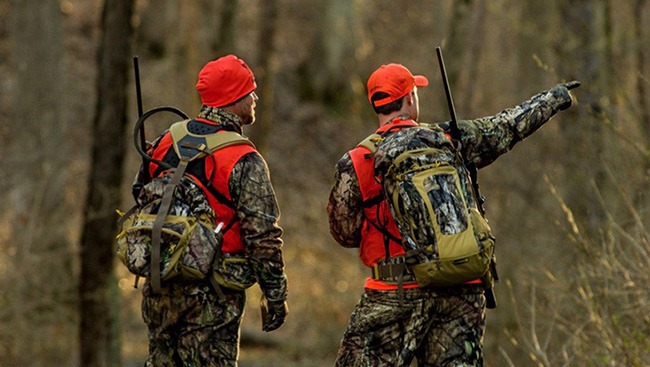
If you simply cannot find a blood trail of any kind, divide the land where you last saw the deer into a grid and walk each grid point until you find the deer or a sign of its trail.
In that case, expand the grid and repeat. Look under every bush and in every brush pile. A mortally wounded deer will often crawl under cover and will die there.
What Lighting Works Best for Night Tracking?
Tip 8. Light the Way
You have no doubt read that when tracking at night, a Coleman lantern, "makes blood glow like neon." The lantern does show blood a bit better than a conventional flashlight, but it's always been a disappointment to me when I have used one. Besides, who has a Coleman lantern in their backpack?
A quality flashlight will show blood like its electrified. It's a good idea to have one in your pocket or backpack when hunting.
Where Would a Wounded Deer Go?
Tip 9. Become the Deer
Walk along while thinking, "If I were a wounded deer, which way would I go?" Just follow your instincts. You may have to return to the last sign and strike out in another direction a few times, but sooner or later the odds are you will find a new spot of blood or identifiable track and you'll be back in the game.
Can Intuition and Terrain Flow Lead You to Your Deer?
Tip 10. Turn Off Your Brain
Another approach is to turn off your brain and just walk. Let the terrain and vegetation guide your feet. Deer and other animals will take the path of least resistance and if you walk in a "Zen" state, going with the flow, you will find you do the same thing.
Once you get in tune with the woods, things like that just happen in the back of your mind. If you try to think about it too much, you screw it up, but if you just let the reptilian part of your brain operate then eons of evolution are suppressed and the caveman in you will come out of hiding and turn you into a creature of the woods, just like the deer. I know this may sound a bit too "new age," but I have found several animals we thought were hopeless using this technique.
How to Read the Land for Deer Hunting in Different Terrains
Tracking with Technology
I used a thermal imaging unit in Zimbabwe a few years ago to watch for lions while the PH and trackers cut up a buffalo I had shot just before dark. Back then they were very expensive. Today, there are several affordable units designed for tracking.
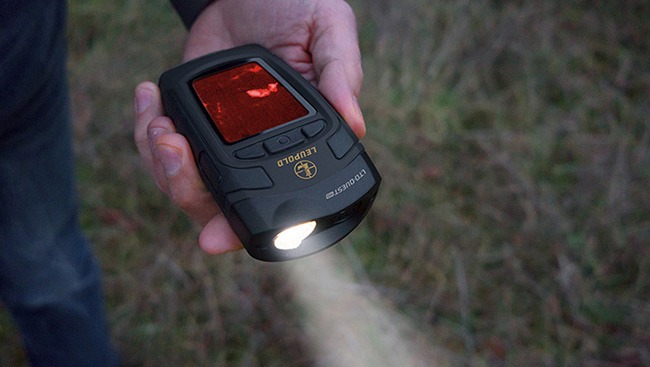
Photograph Courtesy of Leupold® & Stevens, Inc.
I have been using a Leupold LTO Quest. This is their entry-level unit and it has a camera and flashlight built in with the thermal sensor. Leupold claims the LTO Quest can detect heat signatures out to 300 yards. Deer season is closed as I am writing this, so I am finding alternatives to test it with. It easily can find my dogs even when they are out some distance.
I couldn't find a blood donor to help with the test, so I spit on my walkway on a cool night. The unit could easily see it, even after several minutes. This unit is sensitive enough that when I stood on my deck in my socks, the unit could detect my foot prints for several minutes after.
This technology may well be a game changer for tracking and finding wounded deer in the years ahead.
Conclusion
Recovering a deer after the shot isn't just about skill-it's about patience, persistence, and respect for the animal. By staying calm, reading sign carefully, and knowing when to push forward or back out, you dramatically increase your odds of success.
Remember: every track tells a story. Learn to read it, and you'll not only recover more deer but also deepen your connection with the hunt itself.
About the Author
Bryce M. Towsley has been writing about guns for 36 years and has published thousands of articles in most of the major firearms magazines. He has hunted all over the world and is a competition shooter in several disciplines. Towsley has several books available on guns, shooting and hunting as well as an adventure novel, The 14th Reinstated. Signed books are available on his website.

Bryce Towsley
Quick Takeaways: Tracking a Deer After the Shot
Stay calm
Read the blood
Be patient
Follow all sign
Stay calm
Mark the exact spot of impact before leaving your stand.
Read the blood
color and consistency reveal where the deer was hit.
Be patient
Rushing can push a wounded deer farther away.
Follow all sign
Tracks, broken brush and scuffed leaves all tell the story.
FAQ: Common Deer Tracking Questions
Even experienced hunters run into tracking challenges after the shot. These quick answers cover the most common questions about when to follow, how to read sign and what to do when the trail goes cold.
How soon should I start tracking after shooting a deer?
Expand
This can vary depending on shot placement. If the downed deer is in sight and you are sure you made an accurate heart or lung shot, you can begin your cautious approach shortly after the shot, keeping your eyes on the deer.
If the deer is not in sight, you should wait 30 minutes to an hour before beginning to track.
What's the easiest way to find first blood?
Expand
Start at the point of impact and look for hair, disturbed soil, or leaves with tiny blood droplets.
What should I do if I lose the blood trail?
Expand
Return to the last sign and begin making slow, wide circles until you pick it up again. If needed, switch to a grid search in thick cover.
What's the most common mistake hunters make after the shot?
Expand
Pushing too soon. A wounded deer can travel much farther if pressured. Waiting and reading the sign carefully increases recovery success.
Deer Hunting Strategies
Field to Fork: Venison Recipes
Venison is lean, healthy, and full of flavor. From simple burgers and chili to roasts and stews, it's a versatile meat that turns your harvest into delicious meals for family and friends.

Everyone needs a little comfort food from time to time, and meatloaf definitely fits the bill.
Read more

These quick and easy BBQ sandwiches are perfect for a quick venison meal.
Read more

This Stuffed Shells with Venison Meat Sauce recipe will hit the spot.
Read more
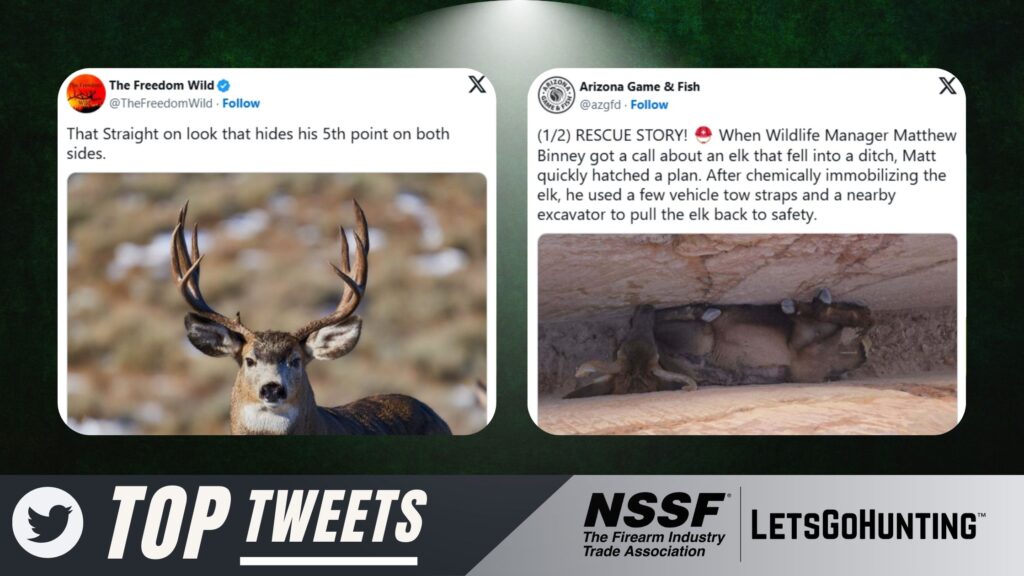
 Very rarely do deer "drop in their tracks" at the shot. Once you make your shot, stay focused on the deer noting where it was when you fired and the direction it took off in.
Very rarely do deer "drop in their tracks" at the shot. Once you make your shot, stay focused on the deer noting where it was when you fired and the direction it took off in.
 Before you leave your stand, use your phone to take a photo of where the deer was standing when you shot and the landmark where you last saw the deer before it disappeared.
Before you leave your stand, use your phone to take a photo of where the deer was standing when you shot and the landmark where you last saw the deer before it disappeared.
 When looking for a blood trail, heavy signs higher up on bushes or spurts off the trail may indicate arterial bleeding, which means you should find your deer shortly.
When looking for a blood trail, heavy signs higher up on bushes or spurts off the trail may indicate arterial bleeding, which means you should find your deer shortly.
 If you simply cannot find a blood trail of any kind, divide the land where you last saw the deer into a grid and walk each grid point until you find the deer or a sign of its trail.
If you simply cannot find a blood trail of any kind, divide the land where you last saw the deer into a grid and walk each grid point until you find the deer or a sign of its trail.
 Photograph Courtesy of Leupold® & Stevens, Inc.
Photograph Courtesy of Leupold® & Stevens, Inc.
















 There are plenty of choices among the deer rifles, and the correct choice is a personal one.
There are plenty of choices among the deer rifles, and the correct choice is a personal one.
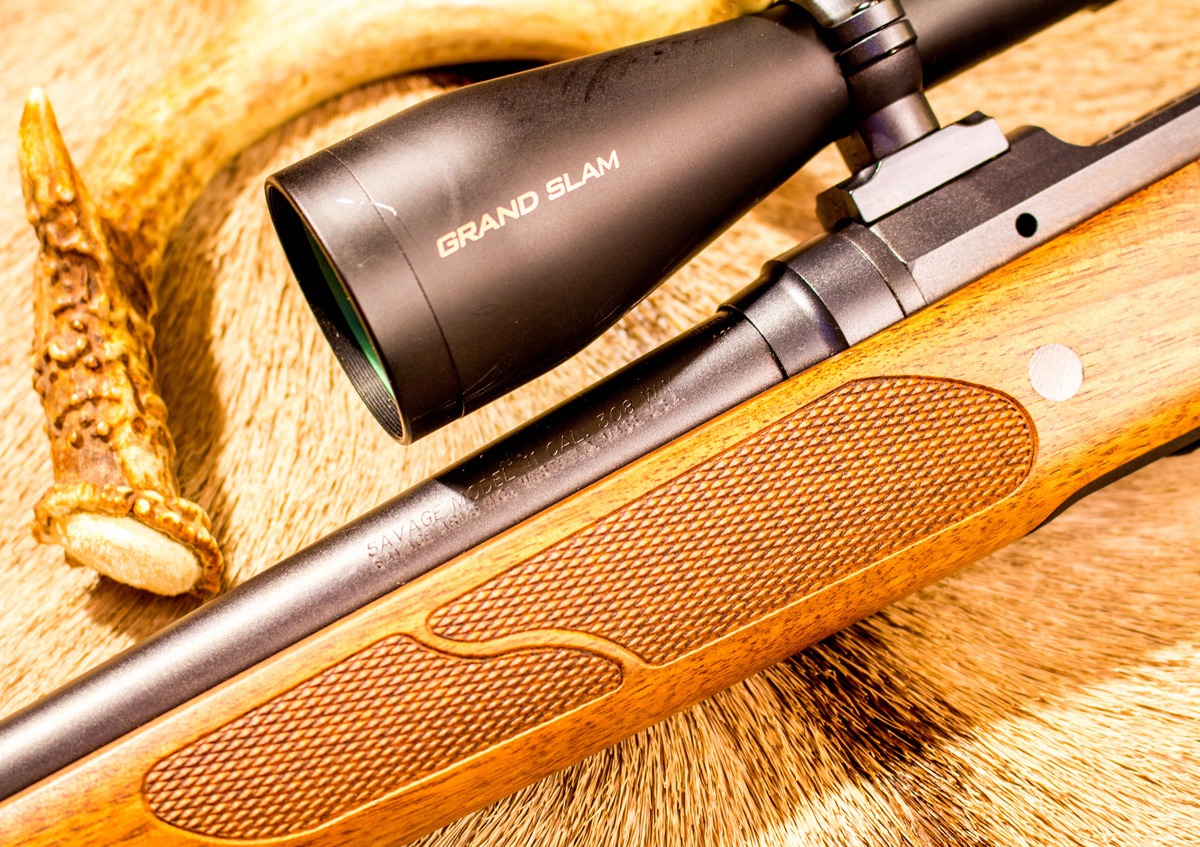 A short-action Savage Model 11, chambered in .308 Winchester and stocked in the LadyHunter configuration with a shorter buttstock, is a perfect choice for women heading to the deer woods.
A short-action Savage Model 11, chambered in .308 Winchester and stocked in the LadyHunter configuration with a shorter buttstock, is a perfect choice for women heading to the deer woods.
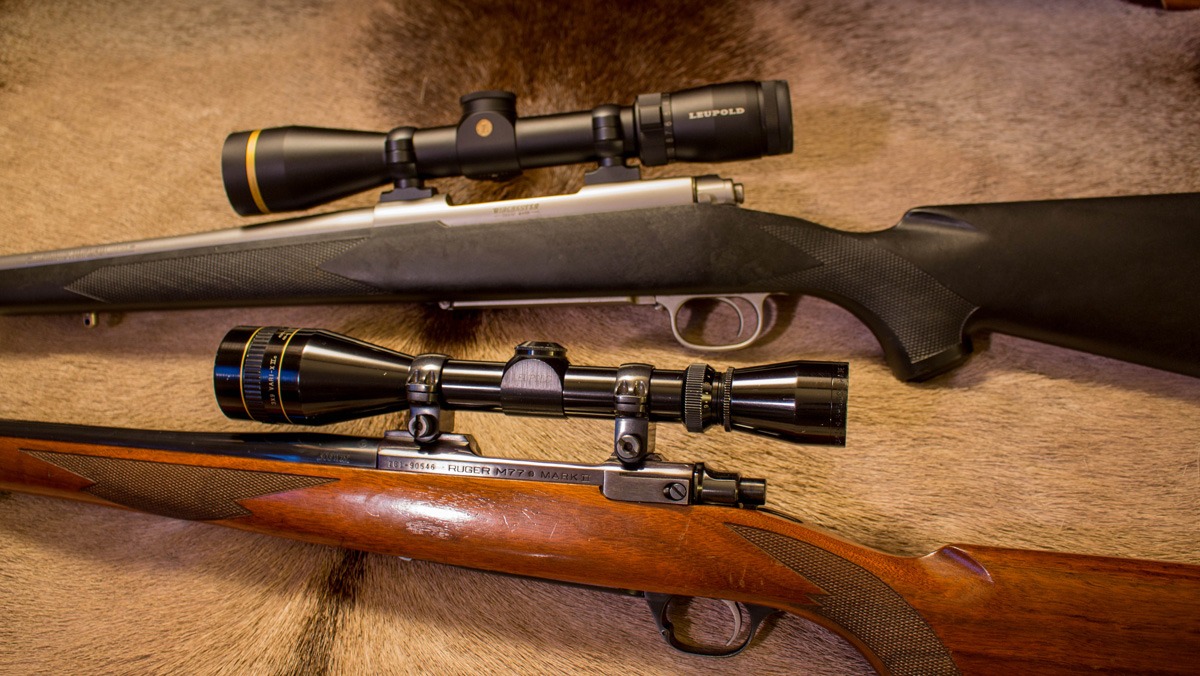 A pair of bolt-action rifles, the Winchester Model 70 and Ruger Model 77 MkII, each a great choice for general deer hunting.
A pair of bolt-action rifles, the Winchester Model 70 and Ruger Model 77 MkII, each a great choice for general deer hunting.
 The Winchester Model 94, chambered in .30-30 Winchester, still makes a solid deer rifle, especially in the East where shots tend to be closer in thick forest habitat.
The Winchester Model 94, chambered in .30-30 Winchester, still makes a solid deer rifle, especially in the East where shots tend to be closer in thick forest habitat.
